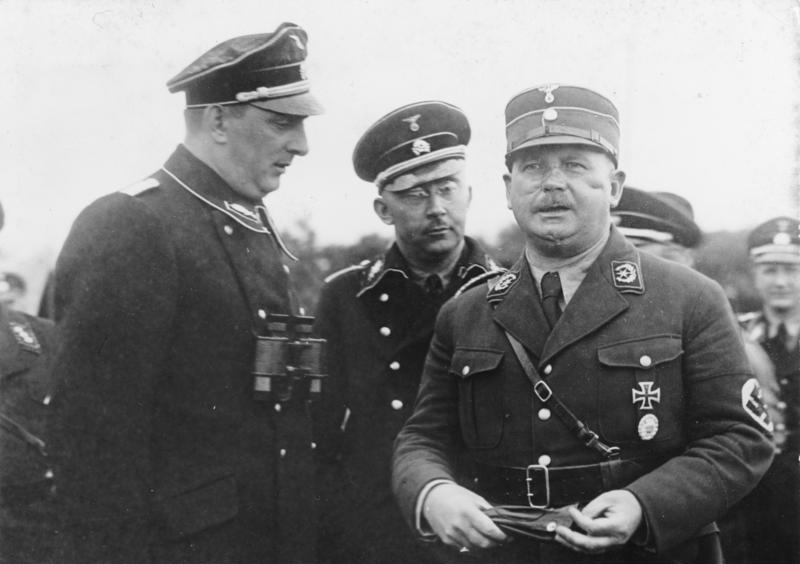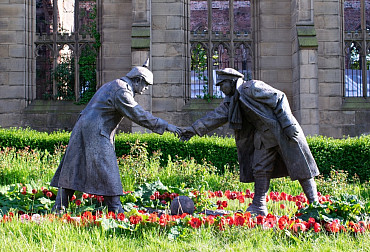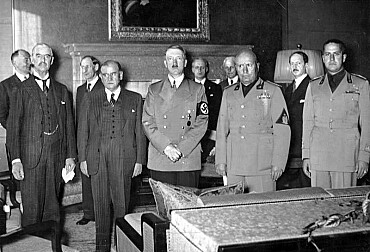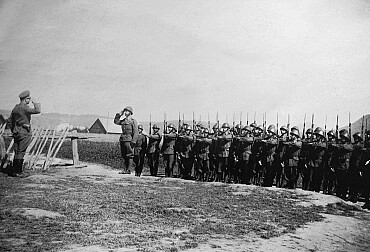June 30th, 1934: The Night of the Long Knives
June 30, 1934 - a date that marks a sinister turning point in the rise of Adolf Hitler and the Nazi regime. Known to history as the Night of the Long Knives, this event was a brutal political purge that lasted for several days, during which Hitler eliminated key rivals and secured his dictatorship over Germany.

Prelude to the Purge
By 1934, Hitler had been Chancellor of Germany for over a year, and his grip on power was tightening. However, one major obstacle remained: the Sturmabteilung (SA), also known as the Brownshirts. This paramilitary organization had played a key role in Hitler's ascent, violently intimidating political opponents and projecting Nazi strength on the streets.
The SA’s leader, Ernst Röhm, was a close ally of Hitler but had become increasingly independent and ambitious. Röhm wanted to merge the SA with the German Army and become its commander-in-chief, an idea that alarmed the conservative military elite and political leadership. Moreover, Röhm’s massive SA—numbering over 2 million men—threatened the traditional power structures in Germany, including the Reichswehr (the official German Army), which was limited to just 100,000 men under the Treaty of Versailles.
Tensions Mount
Röhm’s open disdain for the military and the increasing radicalism within the SA worried not only Germany’s generals but also influential conservatives like President Paul von Hindenburg and Heinrich Himmler, head of the SS. Himmler, along with Reinhard Heydrich and Hermann Göring, began feeding Hitler intelligence (some real, some fabricated) that Röhm was plotting a coup.
At the same time, Hitler needed the support of the Reichswehr to fully establish his control. The Army made its position clear: it would support Hitler as Germany’s Führer only if the SA was neutralized.
The Purge Begins
On June 30, 1934, Hitler acted. He personally flew to Bavaria and arrested Röhm at a resort hotel in Bad Wiessee. Over the next three days, dozens—possibly hundreds—of people were killed without trial. Victims included not only SA leaders, but also conservative critics of Hitler like General Kurt von Schleicher (a former Chancellor) and his wife, as well as Gregor Strasser, a former Nazi who had broken with Hitler over ideological differences.
Hitler justified the purge by claiming that the SA was planning a treasonous uprising. He portrayed himself as the savior of the German nation, acting swiftly to preserve law and order.
Röhm, offered the chance to commit suicide, refused. He was executed by two SS officers in his prison cell on July 1.
Aftermath and Consequences
The Night of the Long Knives sent a terrifying message: no one was safe from Hitler’s wrath, not even long-time allies. The German Army, satisfied with the suppression of the SA, pledged its allegiance directly to Hitler a few weeks later, swearing loyalty not to the state—but to the Führer himself.
The SS, previously subordinate to the SA, emerged as the dominant Nazi paramilitary force. This purge also allowed Hitler to present himself as a responsible statesman to the German public and foreign governments, falsely claiming that he had acted to prevent chaos.
Officially, 85 people were killed. Unofficial estimates place the number of victims at over 200.
Legacy of Terror
The Night of the Long Knives marked a defining moment in the rise of Nazi totalitarianism. It showed Hitler’s willingness to murder not only political enemies but also those within his own ranks. It was the final blow to any remaining internal resistance within the Nazi Party and a clear signal that absolute loyalty to Hitler was a matter of life or death.
From this moment on, fear became a cornerstone of Nazi rule—a regime where loyalty was demanded, dissent was fatal, and power was cemented through bloodshed.







